ANEW: Misreading the City
New York City’s rougher past—violence, decay, the infamous funk—still haunts the stereotypes, but it’s mostly ghosts now.
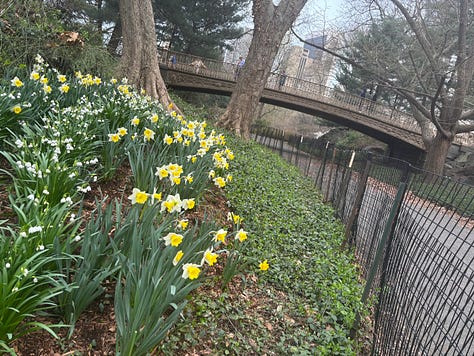
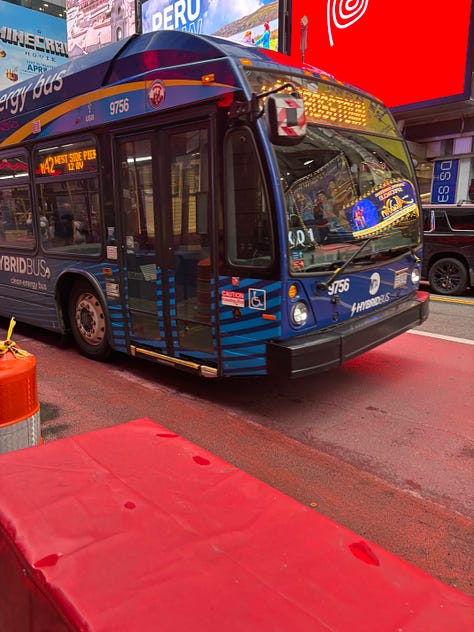
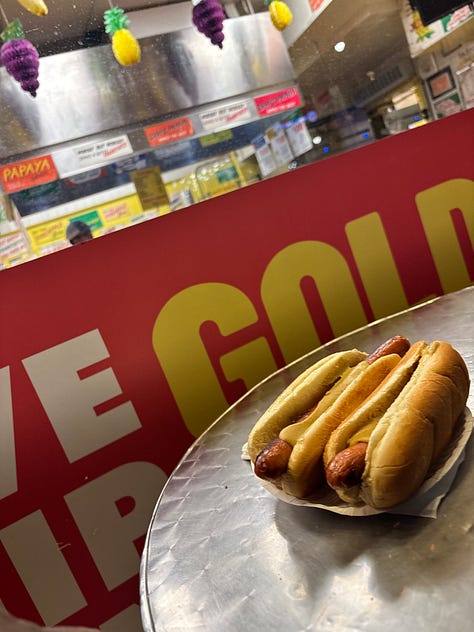
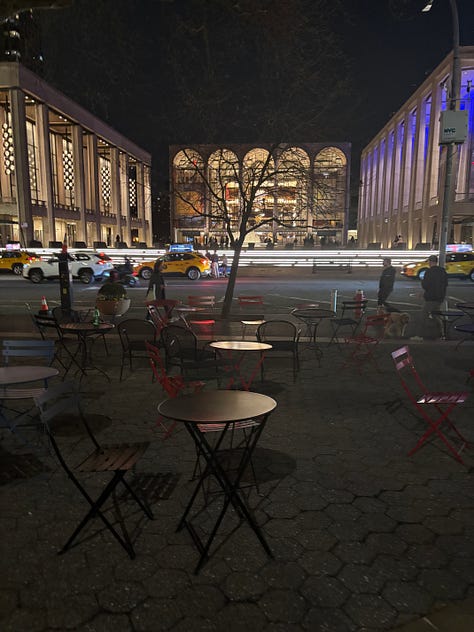
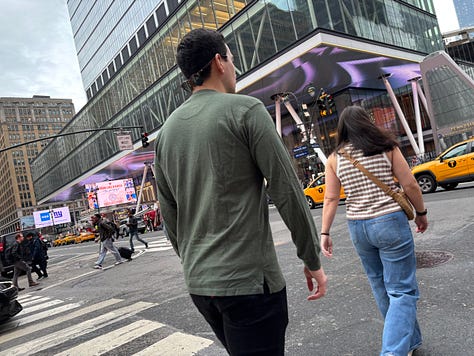

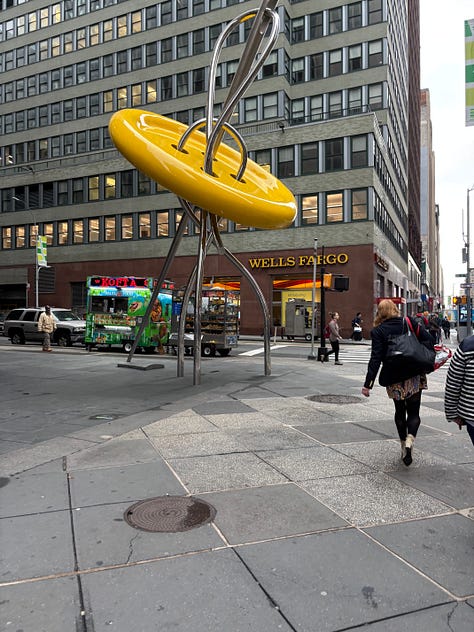
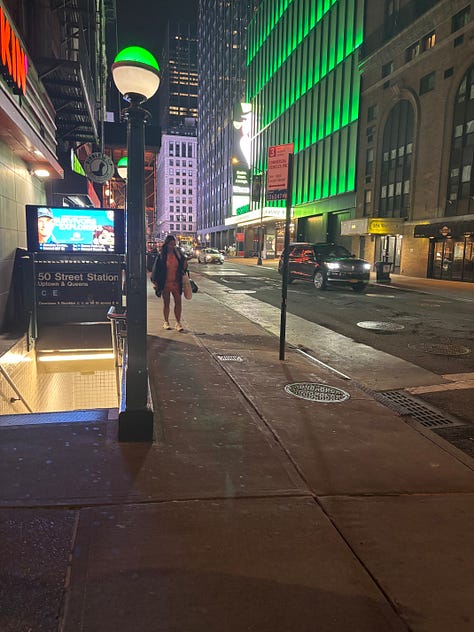
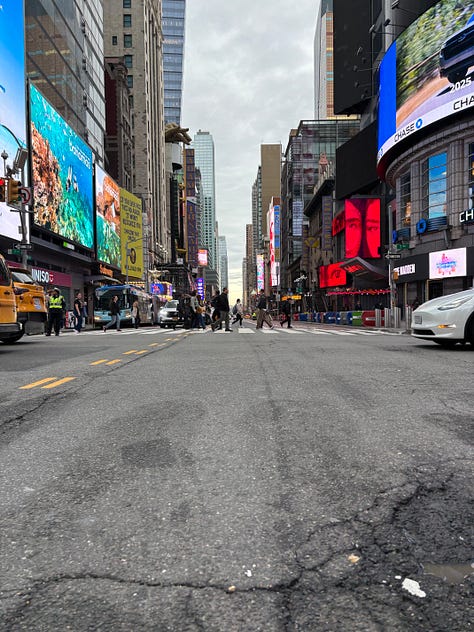
Spending the last few days in Manhattan, I’ve been thinking about the first time I met New York as an adult—on my own, eyes wide open. It was the 1980s, and the City already had a mythic reputation: vibrant, electric, pulsing with life. It also had a darker edge—crime, grime, the kind of urban decay that lived in the national imagination. And yet, even then, something about the place felt unmistakably alive.
Now, decades later, the reputation remains, but the reality has changed—or maybe it’s just that I’ve come to see it more clearly. What’s often missed about New York is how impossible it is to describe in single strokes. The density is not just about population. It’s about experience. It’s about sensation.
Walking up 7th Avenue, trying not to bump into strangers, I felt like I was in a lesson on proprioception—where does my body end and someone else’s begin? It’s not always clear. In a city like this, you’re always in contact. Fabric to fabric, elbow to elbow. And it’s not just people—it’s language, scent, rhythm, color, cuisine. Tokyo, Beijing, Mumbai, London—they all thrum with urban density. But New York’s secret ingredient is how fully it lets every culture show its face.
The walk from 28th Street to 48th was a moving canvas of spring sunlight and human variety. People gathered around open-air tables near Herald Square, soaking in the warmth. My friend, a local, pulled a black vinyl case on wheels with the remains of our shared lunch. Around us, hundreds of people walked by—each one a possible thread from a different part of the globe. If America has a mirror, it’s this: a sidewalk full of people laughing, relaxed, unconcerned about difference. If harmony is an ideal, then New York is the peephole through which we glimpse how it might work.
The city’s rougher past—violence, decay, the infamous funk—still haunts the stereotypes, but it’s mostly ghosts now. Sure, steam still rises from beneath the streets like something cinematic, but more often the air is filled with the scent of dumplings, roasted lamb, pretzels, and bakery bread. It’s not utopia. But the myths of danger and despair feel like distant echoes. The NYPD, posted at nearly every other corner, spend more time chatting than chasing. There’s more community in a parked squad car than in most coffee shops.
Today, ironically, is gray and wet. I’m holed up in a micro-hotel near Times Square where the rooms are too small to pretend to be productive. Upstairs, the cocktail bar hums with people whose stories I’ll never know, but whose presence rounds out the city’s chorus. You feel the whole world here, even in a single building.
I didn’t tell many people I was coming. I wanted to walk the city without expectation, to test my own long-held myths. To see if this place is still as hard-edged as some would have us believe. Or if, maybe, it's something else entirely.
What I’ve come to believe is this: New York isn’t a city that wants to be understood. It wants to be experienced. It invites you to stand close to strangers, to get lost in unfamiliar smells and overheard conversations, to stumble into art and beauty without warning. It’s a place that lives beyond labels, especially the outdated, overused ones.
Yes, it may once have been filthy, chaotic, even dangerous. But today’s New York isn’t trying to clean up its image—it’s just living. And in that living, in the noise and the nuance, is something rare: a kind of everyday poetry that doesn’t announce itself, but waits for you to notice.
New York doesn’t ask you to love her. But if you do, she’ll stay with you. Not for how she looks in postcards or movies, but for how she makes you feel—alert, awake, undeniably part of something bigger than yourself.
We should know better than to write her off. She deserves more than cliché.
So do we.
Curated Listening:
So many songs to choose from about New York City. Sinatra, Billy Joel, Jay-Z, Cole Porter, Biggie, Stevie Wonder, and the Bee Gees. Nothing captures the essence of the City in the 1970s like the pulsating disco beat of “Staying Alive.” Listen to the Bee Gee’s croon their iconic hit HERE. “Feel the city breakin' and everybody shakin.” And get out there, boogie a little bit, and enjoy a place that you find the most captivating! “




Brian, what a great exposé on New York City. My family is from NY, so I visited frequently as a child, lived there for 2 years after college, and return as frequently as I can. You've captured the essence of the experience, and as you say, it is hard to define what NYC is. I would point out that NYC has been guilty of aggressive gentrification since the 80s, so some of the quaint neighborhoods I used to frequent have been transformed into playgrounds for the affluent.
Don’t forget Alicia Keys’ “Empire State of Mind”!